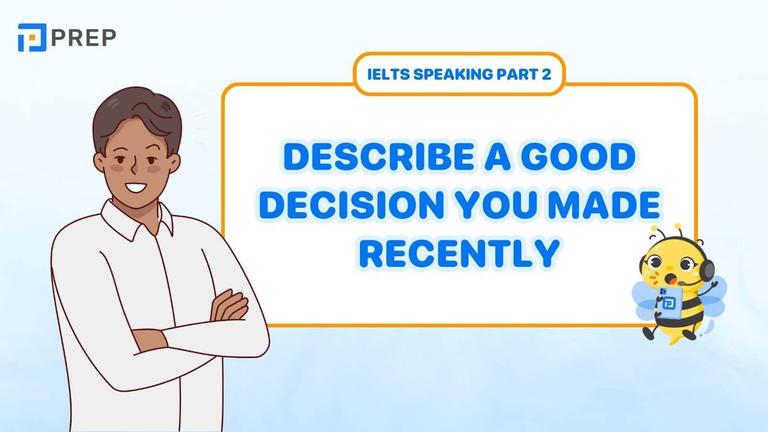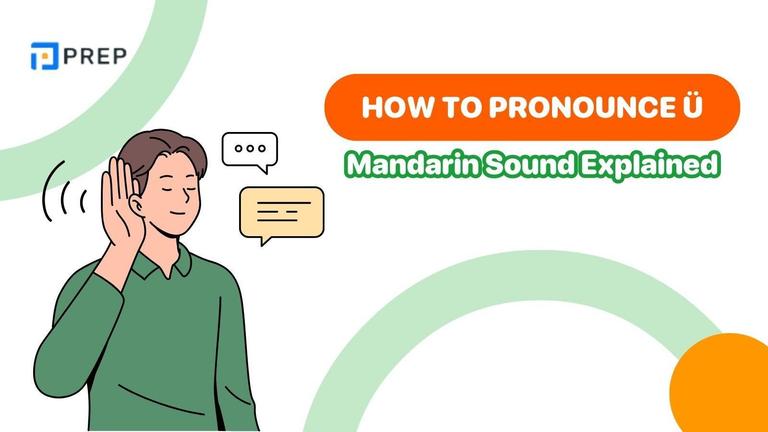Complex Sentences: Definition, Structure, and Exam Tips
A complex sentence combines an independent clause with a dependent clause to express detailed and nuanced ideas. This guide explains the definition, structure, and types of complex sentences, with tips for IELTS, TOEIC, and TOEFL writing and speaking success.

I. What Is a Complex Sentence?
A complex sentence is a sentence that contains one independent clause (a complete idea) and at least one dependent clause (an incomplete idea that cannot stand alone). These two parts are connected by a subordinating conjunction such as because, although, while, or when.
Structure of a Complex Sentence
Basic formula: Independent Clause + Subordinating Conjunction + Dependent Clause (or vice versa)
Examples:
- I stayed home because I wasn’t feeling well.
- Although it was raining, we continued the hike.

Why Complex Sentences Are Important in Writing
- They allow you to show the relationship between ideas (cause, contrast, time, condition...)—a skill that also strengthens your English comparisons.
- They help break away from repetitive, short, simple sentences
- In exams like IELTS or TOEIC, using complex structures improves your Grammatical Range & Accuracy score
By mastering how complex sentences work, learners can strengthen both their sentence variety and logical flow, especially in formal or academic writing.
II. Structure and Rules of Complex Sentences
To write complex sentences correctly, you need to understand how their parts work together. A well-formed complex sentence combines a main (independent) clause with one or more dependent clauses, using a subordinating conjunction to connect them.
1. Relative Clauses
A relative clause is a type of dependent clause that adds more information about a noun in the main (independent) clause. It begins with a relative pronouns such as who, whom, whose, which, or that.
Common Relative Pronouns and When to Use Them
|
Relative Pronoun |
Refers To |
Function / Use |
Example Sentence |
|
who |
People |
Used as the subject of the relative clause |
The teacher who explained the topic was very helpful. |
|
whom |
People |
Used as the object of the relative clause |
The student whom I met yesterday is from Japan. |
|
whose |
People / Things (formal) |
Shows possession |
The girl whose phone rang left the room. |
|
which |
Things or animals |
Refers to things; used in defining and non-defining clauses |
The book which I borrowed is excellent. |
|
that |
People or things (defining) |
Replaces who or which in defining (essential) relative clauses |
The computer that she uses is brand new. |
Defining vs Non-defining Relative Clauses
- Defining clauses give essential information. They do not use commas.
Example: The man who called you is my uncle. - Non-defining clauses give extra information. They are separated by commas and usually cannot use "that".
Example: My phone, which I bought last year, is already outdated.
Punctuation Rules
- Use commas with non-defining clauses.
- No commas are used with defining clauses.
- Do not use "that" in non-defining clauses.
Common Mistakes and How to Avoid Them
- Using "that" in non-defining clauses
Incorrect: John, that lives in London, is a writer.
Correct: John, who lives in London, is a writer. - Forgetting the relative pronoun
Incorrect: The person I met yesterday was helpful.
(Acceptable in spoken English, but in formal writing: The person whom I met...)
Understanding and using relative clauses allows you to create more precise and elegant complex sentences, especially useful for academic writing and standardized speaking or writing tasks.

2. Noun Clauses
A noun clause is a group of words that acts as a noun in a sentence. Just like a noun, it can be the subject, object, or complement (bổ ngữ) in a sentence. Noun clauses begin with words like that, whether, if, who, what, how, why, and more.
Noun clauses are a key component of complex sentences, especially in formal writing and academic communication.
Common Noun Clause Starters
Some frequent subordinating conjunctions and question words that begin noun clauses include:
- that
- if / whether
- what, who, whom, which, when, where, why, how
Functions of Noun Clauses in Sentences
|
Function |
Explanation / Placement |
Example |
|
Subject |
Acts as the main subject of the sentence |
What she said was surprising. |
|
Object |
Acts as the object of a verb |
I don’t know if he will come. |
|
Complement |
Completes the sentence after linking verb |
The fact is that she passed the exam. |
Examples by Type
- As subject: Whether we’ll go is unknown.
- As object: He explained what the problem was.
- As complement: The truth is that we were late.
Grammar Notes
- Noun clauses can’t stand alone as complete sentences.
Incorrect: That she passed the exam. - In formal writing, "that" is often retained for clarity, even if dropping it is okay in speech.

3. Adverbial Clauses
An adverbial clause is a type of dependent clause that functions as an adverb, providing information about when, why, where, how, or under what condition something happens in the main clause. It helps add depth, logic, and detail to a sentence.
Adverbial clauses are introduced by subordinating conjunctions and play a key role in writing more natural and fluent complex sentences.
Types of Adverbial Clauses
|
Type |
Function |
Subordinating Conjunctions |
Example |
|
Time |
Tells when something happens |
when, before, after, until, as, while, since |
I’ll call you when I get home. |
|
Reason |
Explains why |
because, since, as |
He left because he was tired. |
|
Contrast |
Shows contrast or exception |
although, though, even though, whereas |
Although it was late, they kept working. |
|
Condition |
States a condition |
if, unless, provided that, in case |
If it rains, we’ll cancel the trip. |
|
Purpose/Result |
Explains why or what for |
so that, in order that |
He studied hard so that he could pass. |
Punctuation Rules
- When the adverbial clause comes first, use a comma after it.
Example: Although he was tired, he continued working. - When it comes after the main clause, no comma is needed.
Example: He continued working although he was tired.
Common Mistakes to Avoid
- Forgetting the comma when the clause comes first
- Using the wrong subordinating conjunction for the intended meaning
- Writing sentence fragments (an adverbial clause alone is not a complete sentence)
Adverbial clauses allow writers and speakers to express cause and effect, sequence, contrast, and condition — all vital for logical coherence in academic writing, exam responses, and professional communication. Mastering them is a major step toward building fluent and grammatically sophisticated English.

III. How to Write Complex Sentences Effectively
Writing complex sentences is not just about knowing the grammar – it’s about using them with clarity and confidence to express detailed, logical ideas. In this section, you’ll learn step-by-step strategies to turn basic statements into effective complex sentences — and avoid common mistakes.
Step 1: Start with Two Simple Sentences
Before creating a complex sentence, make sure you have:
- One complete idea (independent clause)
- One related idea that can become the dependent clause
Example:
- She was tired.
- She finished the report.
Step 2: Choose a Suitable Subordinating Conjunction
Think about the logical relationship between the two ideas. Do you want to show time, reason, contrast, or condition?
Examples of subordinating conjunctions: because, although, while, if, since, when, even though
Step 3: Combine and Restructure
Use the subordinating conjunction to link the ideas, turning one into a dependent clause.
Example (Reason): “Although she was tired, she finished the report.” or “She finished the report although she was tired.”
Step 4: Check Grammar and Punctuation
- Use a comma if the dependent clause comes at the beginning
- Avoid run-on sentences by ensuring there’s only one main clause per sentence unless it’s a compound-complex sentence
- Keep subject–verb agreement and pronoun references clear
Step 5: Practice Rewriting Sentences
Turn simple or repetitive sentences into more advanced forms using complex structures.
Before: I woke up late. I missed the bus.
After: Because I woke up late, I missed the bus.
Writing Tips:
- Don’t overuse complex sentences—balance them with simple and compound sentences for variety.
- Vary the position of your dependent clause to improve rhythm and natural flow.
- Practice using a range of subordinating conjunctions to express different ideas.

IV. How to Use Complex Sentences in Exam Writing
Most English proficiency exams—like IELTS, TOEIC, and TOEFL—specifically assess your ability to use various sentence types, and complex sentences are essential at intermediate to advanced levels.
IELTS Writing & Speaking
In the IELTS test, complex sentences are a core component of the Grammatical Range and Accuracy criterion. They help you:
- Link ideas logically
- Show relationships (cause, contrast, condition, time)
- Vary sentence structure for higher band scores
When to use:
- Writing Task 2: To connect arguments, reasons, and consequences
Example: Although traffic congestion is a serious problem, few governments have taken action. - Speaking Part 3: To explain opinions with greater depth
Example: I believe online learning has benefits, even though it limits face-to-face interaction.
Tip: Use subordinating conjunctions like while, although, because, if, and try to place clauses in different positions to show control.
TOEIC & TOEFL Writing and Listening
In TOEIC and TOEFL, sentence variety is important for both writing formal responses and understanding complex sentence structures in reading or audio passages.
TOEIC Writing:
- Email tasks (e.g. Question 1–2): Use complex sentences to sound more professional
Example: We decided to revise the schedule because the client requested an earlier delivery. - Opinion tasks (e.g., Question 3): Use logical connectors for argument development
Example: While coworking spaces offer networking opportunities, they may lack privacy.
TOEFL Writing:
-
Use complex sentences to present cause-effect and contrast between ideas
Example: If the government reduces funding for public transport, more people may rely on private cars.
TOEFL Listening & Reading:
- Recognize complex sentence structures to follow longer academic-style texts or lectures
- Identify main ideas and supporting details more clearly when clauses are nested
By using complex sentences in your writing and speech:
- You demonstrate language proficiency appropriate for Band 7+ in IELTS or advanced level in TOEIC/TOEFL
- Your writing maintains a balance of clarity and academic tone
- You build stronger paragraph coherence and conceptual relationships between ideas
V. Exercises on complex sentences with detailed answers
Now that you understand how complex sentences are formed and where they’re used, it’s time to put knowledge into practice. Below are various exercises designed to help you improve your ability to recognize, build, and correct complex sentences.
Exercise 1: Identify the Dependent Clause
Instructions: Underline the dependent clause in each sentence.
- She went to the doctor because she had a high fever.
- Although it was raining, they played football.
- I’ll finish the report when I get back to the office.
- He continued working even though he was exhausted.
- We won’t start the meeting unless the manager arrives.
Exercise 2: Combine Simple Sentences into a Complex Sentence
Instructions: Use a subordinating conjunction to combine the two simple sentences into one complex sentence.
- I was tired. I finished the assignment.
- She won the prize. She wasn’t expecting it.
- You study hard. You will improve your writing.
- He didn’t attend the meeting. He had an emergency.
- The power went out. I was cooking dinner.
Exercise 3: Error Correction – Fix the Complex Sentence
Instructions: Each of the following sentences contains an error. Rewrite them correctly and explain the mistake.
- Because I was late. I missed the train.
- Unless you will study, you don’t pass.
- When he arrives, we eats dinner.
- I went to school although I was sick I felt awful.
- If I had more time I would read more, I like books.
Answers
|
Exercise 1 |
|
|
Exercise 2 |
|
|
Exercise 3 |
|
VI. Need help acing your IELTS exam?
This article has provided useful insight into complex sentences that students should grasp. Need help acing your IELTS exam? Check out our top-rated practice modules here
-
IELTS learning online: Score Big in IELTS With Our Expert Tips!

Hi I'm Chloe, and I am currently serving as an Product Content Administrator at Prep Education. With over five years of experience in independent online IELTS study and exam preparation, I am confident in my ability to support learners in achieving their highest possible scores.
Comment
Premium content
View allPersonalized roadmap
Most read












